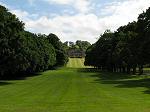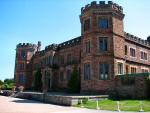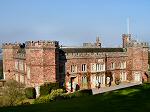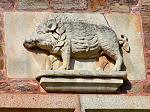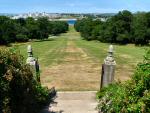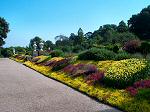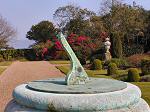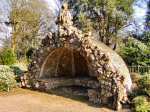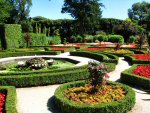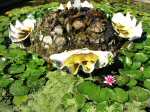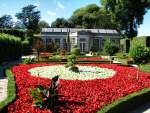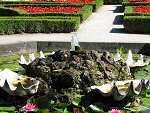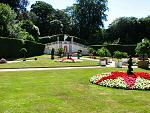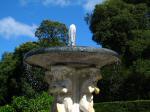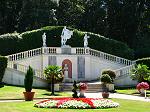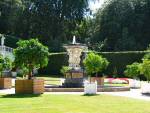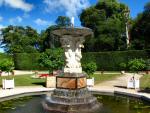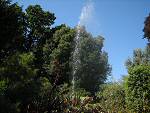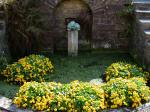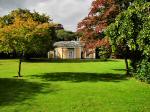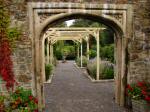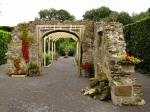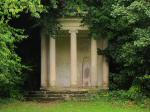Mount Edgcumbe Country park lies across the Tamar from
Plymouth on the Rame Peninsula and consists of Mount Edgcumbe house itself
and the 865 acre country park surrounding it.
The estate was formerly owned by the Earls of Edgcumbe, the estate coming
to Sir Piers Edgcumbe of Cotehele, by marriage when, in 1493 he married
Joan Durnford heiress to the Durnford family estates which included estates
in Plymouth, Maker and Rame. Sir Piers, with permission from Henry VIII,
built a deer park in 1539 and his son, Sir Richard Edgcumbe, ordered work
to start for a house to be built overlooking the mouth of the Tamar and
Plymouth Sound, in 1547.The house, un-like the original family home at
Cotehele,was built to take advantage of the views rather than as a more
defensive structure built around a courtyard.The house was finished in
1553 and gradually became the main residence of the family by the late
17th century.The house was held for the Royalist side during the English
Civil war with the nearby Maker Church tower being fortified by the Royalist
garrison. The Banqueting Hall adjoining the House was damaged by the Plymouth
Parliamentary forces during an attack in May 1644.
In 1941 the house was hit during a German air raid and was left a gutted
shell. The 6th Earl began re-building work in 1958, the house and grounds
was sold to Plymouth City Council and Cornwall County Council in 1971,
with the family retaining a lease to live there until 1987. The house
has been open to the public since 1988 and has been restored to its 18th
century style.
Mount Edgcumbe has been renown since the 18th Century for its landscape
and gardens. The Earl's Garden was created beside the House in the 18th
century whilst the formal gardens lay at the foot of the hill near the
village of Cremyll. Originally a "wilderness" garden created
in the 17th century it was re-modelled by the Edgcumbe family in the 18th
century to form the French, Italian and English gardens. This has been
extended in modern times with the addition of the New Zealand and American
Gardens. The coastal path runs through the park from Cremyll leading to
Rame Head and Whitsand Bay. There is a herd of fallow deer which roam
amongst the woodlands and many follies with magnificent views of Plymouth
Sound and the River Tamar. |
